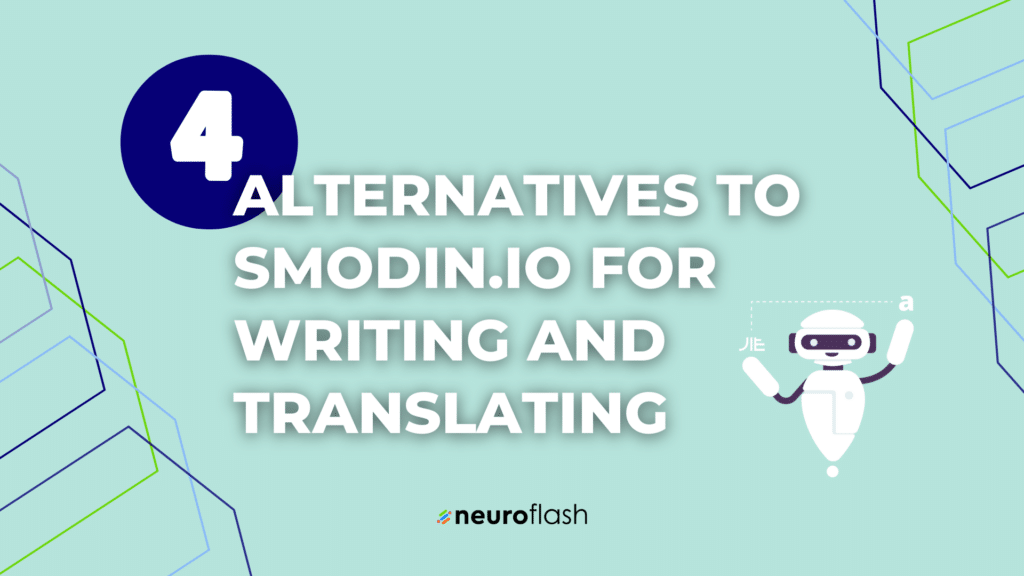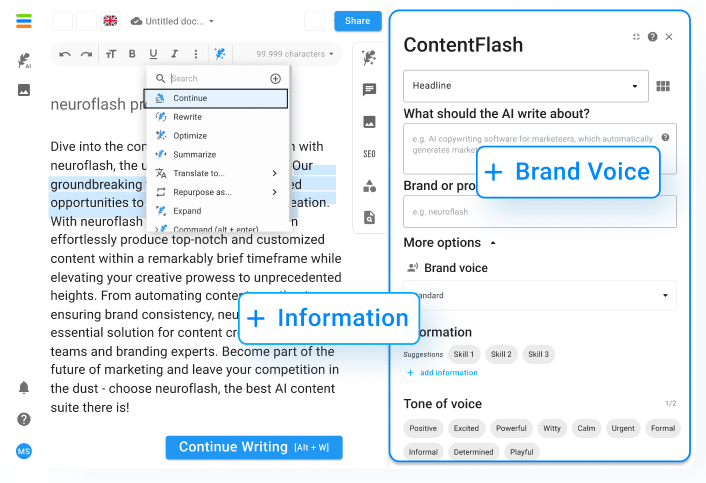Have you ever found yourself struggling to come up with chatgpt prompts to get better results or inspire a reaction? The ability to prompt effectively is a crucial skill in today’s fast-paced world, whether it’s in the workplace, social media, or daily communication. Not being able to prompt effectively can lead to confusion, missed opportunities, and inefficient communication. Fortunately, there’s a solution to this common problem. With the advancement of technology, tools like GPT-4 are being developed to make prompt generation easier and more effective. This article will explore the importance of prompting, common challenges, and the power of GPT-4 to alleviate these challenges. By the end, you’ll have a better understanding of the impact of prompting and how to leverage technology to enhance your communication skills.
1. Simple Steps to Better ChatGPT Prompts
Are you tired of giving prompts that don’t quite hit the mark? It’s time to step up your prompt game and start seeing better results. Prompts are a critical tool for learners, especially for those with autism or behavioral challenges. With the right prompts, students can learn new skills and behaviors more effectively.
To create effective prompts, there are a few simple steps you can follow. First, make sure your prompts are clear and concise. Use visual aids or models to supplement verbal prompts. This can be especially useful for learners who struggle with verbal instruction. Additionally, be sure to tailor your prompts to the specific task or behavior you want the student to learn. One size does not fit all when it comes to prompting.
Perhaps the most important step is to provide prompts that are at the appropriate level of difficulty for the learner. Too easy, and the student won’t be challenged enough to learn. Too hard, and they may become frustrated and give up. Finding the sweet spot requires careful observation and assessment of the student’s abilities.
By taking these simple steps, you can create prompts that pack a punch. Used effectively, prompts can elevate your teaching and help your students succeed. So don’t be afraid to try new approaches and experiment with different types of prompts. With practice and persistence, you can become a prompt master and help your students reach their full potential.
For more helpful tips and insight on using prompts effectively in teaching, visit this link:
Content Writing for Beginners: Tips & Tricks
2. ChatGPT prompts to get better results:
Have you ever struggled to come up with the right words or actions to get your students or learners to perform a task or behavior? That’s where prompts come in handy! Prompts are cues or reminders that you can use to encourage the right behavior or response.
Effective prompts can make all the difference in the learning process, especially for students with autism or other learning differences. Using prompts can help a child understand what is expected of them, and can guide them in the right direction toward achieving their goals.
Whether it’s a verbal or physical prompt, the key is to make it clear and concise. Providing a specific example or model can also be helpful for students who are visual learners.
Prompts can be tailored to meet the needs of the individual student. A teacher can adjust the level of prompting depending on the student’s skill level and progress. With a little bit of trial and error, you can find the perfect prompt that gets results.
So don’t be afraid to use prompts in your teaching or training sessions. They can be powerful tools in helping students reach their full potential..
Creating effective prompts is crucial for learners, especially those with autism or behavioral challenges. To ensure success, prompts should be clear, concise, and tailored to the student’s ability level. For more examples and details on creating the perfect prompts, check out this helpful source: Prompting Examples: Tips for Clear and Concise Instruction.
3. The Power of Precision Prompts to get better results
Are you tired of giving prompts that fall flat with your students or learners? Do you want to make sure that your prompts get the results you need? If so, it’s time to consider the power of precision prompts.
Precision prompts are prompts that are tailor-made for the specific task or behavior you want your student or learner to perform. These prompts use visual, verbal, and physical cues that are specifically designed to guide your student through the learning process. By using precision prompts, you can ensure that your student understands exactly what you want them to do and how to do it correctly.
For example, let’s say you’re teaching a child with autism how to tie their shoes. You might start by giving them a verbal prompt like “grab your laces” or a physical prompt like gently guiding their hands to the correct position. However, if these prompts are not specific enough, your learner may still struggle with the task.
By using precision prompts, you can take things to the next level. You might use a visual prompt like a step-by-step picture guide or a model that demonstrates how to tie shoes correctly. You could also use a combination of prompts like having the learner watch you do it first, then guide them through the steps verbally and physically until they can do it on their own.
Whether you’re a teacher or a parent, using precision prompts can make a huge difference in your student or learner’s progress. By following these simple steps, you can create prompts that pack a punch and take your teaching to new heights..
For more tips and strategies on effective teaching and training methods, check out our blog post on:
Content Writing for Beginners: Tips & Tricks
4. Prompts Packed with Punch
Are you tired of lackluster prompts that don’t pack a punch? It’s time to elevate your writing with some powerful, precision prompts! If you’re a teacher or working with students who have autism or are learners with physical limitations, prompts are an essential tool to help them achieve their goals.
Using prompts is a proven method of teaching that helps students learn by guiding them through the task at hand. There are two types of prompts – verbal and visual – and they can be used together or separately, depending on the needs of the student.
For example, let’s say you’re working with a child who is learning to tie their shoes. A verbal prompt might be “cross the laces over each other,” while a visual prompt could be a picture of someone tying their shoelaces.
The key to effective prompts is precision. Your prompt should be tailored to the student’s needs and clearly communicate what they need to do. Don’t just say “do the task.” Be specific and say “use your left hand to hold the shoelace and your right hand to make the loop.”
When used correctly, prompts are a powerful tool for helping students achieve their goals. So, don’t wait any longer! Start using prompts that pack a punch today and see the results for yourself!.
Experience the benefits of precision prompts for effective learning by using visual, verbal, and physical cues tailored to the individual’s needs. These prompts not only improve understanding but also facilitate skill development for tasks like shoe-tying and more.
Explore a variety of prompting examples and techniques here.
5. Elevating Your Writing with ChatGPT prompts and get better results
If you’re looking to take your writing to the next level, using prompts can be a game-changer. Prompts are simple little cues that can help inspire and guide your writing. By using prompts, you can help elevate the quality of your writing and take it in new and exciting directions. So, where do you start?
The first step is to find prompts that resonate with you. There are hundreds of prompts out there, so take some time to explore and find ones that really speak to you. Look for ones that touch on topics that you’re passionate about, or ones that challenge you to think in new ways.
Once you’ve found a few prompts that you like, it’s time to start using them. You can use prompts in a variety of ways, depending on your writing process and style. Some writers like to use prompts as a starting point, using them to generate ideas and get the creative juices flowing. Others use prompts to help structure their writing, using them as a guide to keep them on track.
No matter how you use ChatGPT prompts, the important thing is to be consistent. Try to incorporate prompts into your writing routine on a regular basis, and don’t be afraid to experiment with different types of prompts to see what works best for you. With a little bit of practice and experimentation, you might be surprised at just how much prompts can elevate your writing.
Our ChatGPT prompts to get better results:
- How can one improve their writing style and make it more engaging for readers?
- What are some effective ways to overcome writer’s block and increase productivity?
- How can someone create a consistent writing schedule that works for them?
- What are the best strategies for conducting research and incorporating it into writing?
- How can someone improve their grammar and punctuation skills to enhance their writing?
- What are the most important elements of a successful blog post or article?
- How can someone develop their creativity and generate new ideas for their writing?
- What are some practical tips for editing and proofreading to improve the final product?
- How can one write a compelling personal statement, cover letter, or resume to attract potential employers?
- What are some effective storytelling techniques to help convey a message or theme through writing?
- Critique the following text and convince myself why it is not good. Let’s think about the problems of the text step by step.
- Create the code for a mindmap in Mermaid for planning a wedding, using appropriate icons as well. Make sure you have the right number of spaces for the hierarchy of layers. Enclose the output in ` and `.
ChatGPT prompts to get better results on SEO:
- “Provide a list of keywords that are commonly searched for in the fitness and wellness industry”
- Provide a list of top-performing keywords for the travel industry in 2023.
- Generate a list of long-tail keywords for the health and wellness niche
- Generate a list of keywords related to the latest technology trends
- Provide a list of keywords that are commonly searched for in the fashion industry
- Generate a list of keywords for the real estate market in [city/region]
- “Provide a list of keywords for the e-commerce industry, specifically related to home goods
- Generate a list of keywords related to the beauty and skincare industry
- Provide a list of keywords that are commonly searched for in the automotive industry
- Generate a list of keywords related to the food and beverage industry
- Provide a list of keywords that are commonly searched for in the education industry
- Generate a list of keywords related to personal finance and investing for businesses, students and freelancers.
- Provide a list of keywords that are commonly searched for in the fitness and wellness industr
- Generate a list of keywords related to the job search and career development
- Provide a list of keywords that are commonly searched for in the entertainment industry
- Generate a list of keywords related to the home improvement and DIY industry
- Provide a list of keywords that are commonly searched for in the pet care industry
- Generate a list of keywords related to the gaming industry
- Provide a list of keywords that are commonly searched for in the outdoor and recreational industry
- Generate a list of keywords related to the renewable energy industry
Useful tips
- Using chatgpt prompts to get better results can help guide a conversation or brainstorming session in a specific direction. Be clear about the objectives of the discussion and tailor your prompts to achieve those objectives.
- Use open-ended questions to encourage discussion and to allow participants to offer their own ideas and perspectives. Avoid closed-ended or leading questions, which may stifle conversation.
- Make sure to give enough time for participants to think before answering. Don’t rush and keep prompting until everyone has had an opportunity to contribute.
- If you’re prompting a group, it’s important to be an active listener. Pay attention to what others are saying and respond appropriately to keep the conversation going.
- Effective prompting can also include non-verbal communication, like nodding or making eye contact to encourage participation and to show that you’re actively engaged in the discussion.
Other People asked
What is a prompt?
A prompt is a message or instruction used to encourage someone to take a particular action. In computing, a prompt is a symbol, message, or keyword displayed to indicate that the computer is ready to receive input or command from the user. In writing, a prompt is a topic or a starting point given to a writer to inspire and guide their writing.
What are some examples of prompts in everyday life?
Examples of prompts in everyday life include a reminder on your phone to take your medication, a sign on a restaurant door to remind customers to wear a mask, or an alarm that goes off to remind you of an upcoming meeting. In education, prompts are often used by teachers to encourage students to think more deeply about a topic or to inspire creativity.
How are prompts used in creative writing?
In creative writing, prompts are commonly used as a starting point to generate ideas, encourage creativity, and challenge writers to think outside of their usual writing habits. Prompts can take the form of a word, a phrase, an image, or a question, and can be specific or open-ended. They can be used for freewriting exercises, to spark inspiration for a longer piece, or to help writers overcome writer’s block.
What are some common types of prompts used in writing workshops?
Common types of prompts used in writing workshops include visual prompts, such as photographs or artwork, which can inspire a story or description. Word or phrase prompts, which can lead to creative wordplay or storytelling. Character prompts, which encourage writers to create and develop a character, and situational prompts, which provide a scenario to build a story around.
How can prompts be used to improve writing skills?
Using prompts regularly can help improve writing skills by encouraging writers to write more often, to think more creatively, and to develop their writing voice. They can also help writers learn to write in different genres and styles, try out new techniques, and overcome any writer’s block or fear of writing. Additionally, using prompts in a group setting, such as a writing workshop, can provide a supportive and encouraging environment for writers to share their work and receive feedback from their peers.
Conclusion
Prompting is the act of guiding someone towards a specific response or action. This article explores different examples of prompting, from using positive reinforcement to help a child learn a new skill to using suggestive language to encourage someone to try a new experience. The article highlights the importance of using prompting techniques in a positive and empowering way, rather than manipulating or coercing the person being prompted. In summary, the article shows that prompting can be a useful tool for helping individuals reach their full potential, as long as it is approached ethically and with the person’s best interests in mind. Overall, the main learning of this article is the importance of using prompting as a supportive strategy to enable growth and development in others.


















